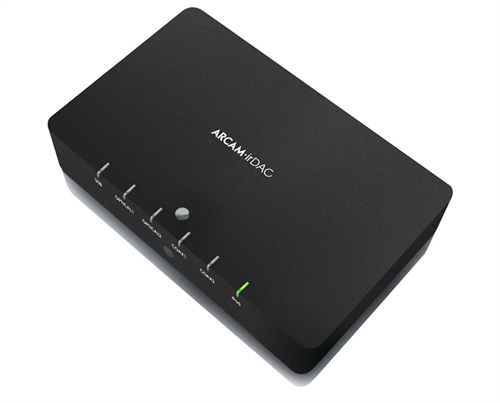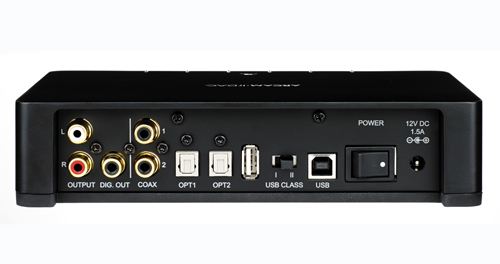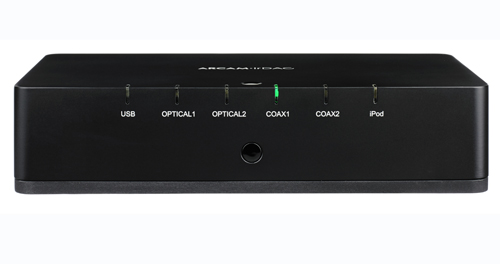What Hi-Fi? Verdict
Best DAC £300-£500, Awards 2014. A brilliantly talented DAC with bags of sonic appeal – its main rivals should be worried
Pros
- +
Tremendous sense of timing
- +
A full-bodied, precise and punchy sound
- +
Loads of detail
- +
Wide selection of inputs
- +
Excellent build quality
Cons
- -
Cheap-feeling remote control
Why you can trust What Hi-Fi?
The Arcam irDAC takes performance at this price to a new level. In fact, we’re left scrambling for superlatives to use to describe this sensational new DAC.
MORE: Awards 2014 - Best DACs
Video review

The irDAC’s rectangular shape is similar to Arcam’s original rDAC: the height is the same, although the chassis is slightly wider and deeper. The way the input indicators hook over the edge of the case (and glow green when in use) is carried over too.
But the design similarities end there. In an attempt to take performance up a notch, Arcam has equipped the irDAC with technology and design cues from the company’s £2000 FMJ D33 high-end DAC.
So, beneath that solid aluminium anti-vibration case you’ll find a new output stage, an advanced eight-stage power supply and a brand new Burr-Brown DAC.
Connections

The irDAC offers a full suite of connections. Twin optical and twin coaxial digital inputs will take the feed from streamers, CD players, TVs, games consoles and so on. There’s also a Type-B USB input.
This is of the asynchronous variety, which means it controls the data flow and not the computer – theoretically resulting in better sound. A switch on the back changes the USB connection between Class I and Class II status (Class II is for feeding the Arcam a 24-bit/192kHz high-resolution stream).
There’s also a Type-A connection. This lets you hard-wire an Apple device and let the Arcam convert the digital signal to analogue. It also charges your portable.
The irDAC is mains powered, but can also be juiced-up by the separate power supplies found in some of Arcam’s other products, such as the A19 stereo amp. Arcam claims this will further improve sound quality.
The “i” in irDAC indicates you get a remote control in the box, unlike its predecessor. The small wand looks and feels cheap, but at least you can change inputs from afar and control the playback and volume of connected portables and compatible media-playing software.
Freebie optical digital and USB-cables are thrown in to get you started too, but you could always look to upgrade these further down the line. There’s also a power cable with foreign plug adaptors in the box.
Sound quality
Where do we start? Well, how about by revealing that we like the irDAC. A lot. Across all inputs, this small black box gives music a quite breathtaking sense of rhythm.
Play a CD-quality file of Ella Fitzgerald’s Let’s Do It (Let’s Fall In Love) and the Arcam captures the vibe of the track perfectly. There’s detail aplenty, with the DAC picking out the delicate piano play, lazy double-bass and Ella’s silky-smooth and beautifully controlled vocal.
But not only does it allow you to pick out the fine details, it’s the way the machine knits, gels and intertwines all the various elements together that really gets your heart going.

Iggy Azalea’s My World has a couple of complex elements and the track can sound lost and confused with inferior kit. But the Arcam has no trouble with a 256kbps stream from Spotify through its USB connection.
The pounding bassline sounds tight and weighty, and while the Arcam sounds more rounded than it does neutral, highs still display sharpness and precision.
For timing and accuracy this DAC is going to be tough to beat. And for those of you wondering whether it’s better than the old rDAC? The words ‘different’ and ‘league’ spring to mind. This model sounds bigger, bolder, more detailed and more cohesive.
Verdict
Some products are impressive from the moment they’re powered up. The irDAC is one of those – the way it sucks you in and encourages to keep listening is a rare talent and one you can’t afford to ignore.
Former current class favourites such as the Musical Fidelity M1 DAC are well and truly outclassed.
MORE: DACs - everything you need to know
MORE: Best DACs to buy in 2014
See all our DAC reviews
What Hi-Fi?, founded in 1976, is the world's leading independent guide to buying and owning hi-fi and home entertainment products. Our comprehensive tests help you buy the very best for your money, with our advice sections giving you step-by-step information on how to get even more from your music and movies. Everything is tested by our dedicated team of in-house reviewers in our custom-built test rooms in London, Reading and Bath. Our coveted five-star rating and Awards are recognised all over the world as the ultimate seal of approval, so you can buy with absolute confidence.

